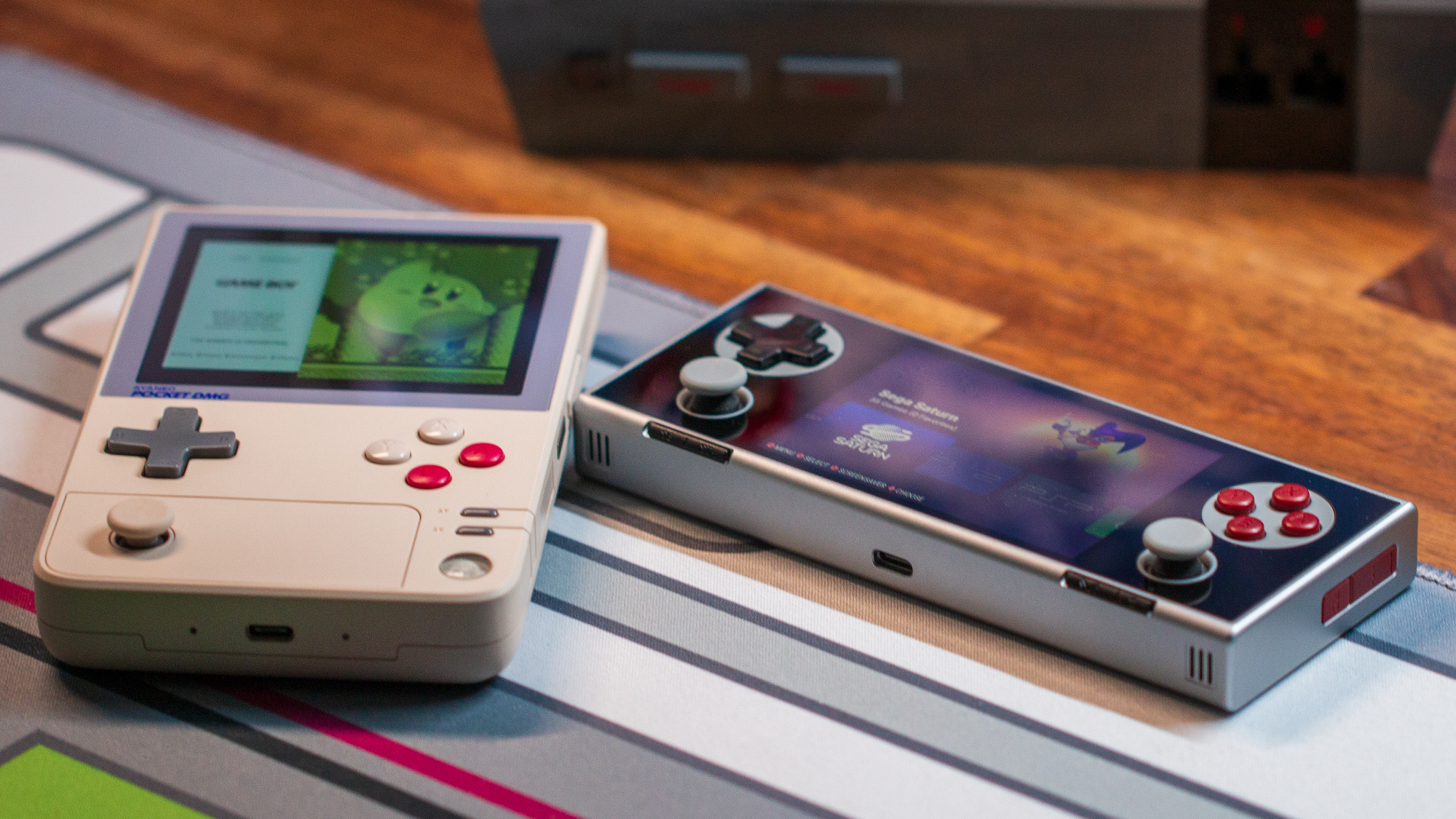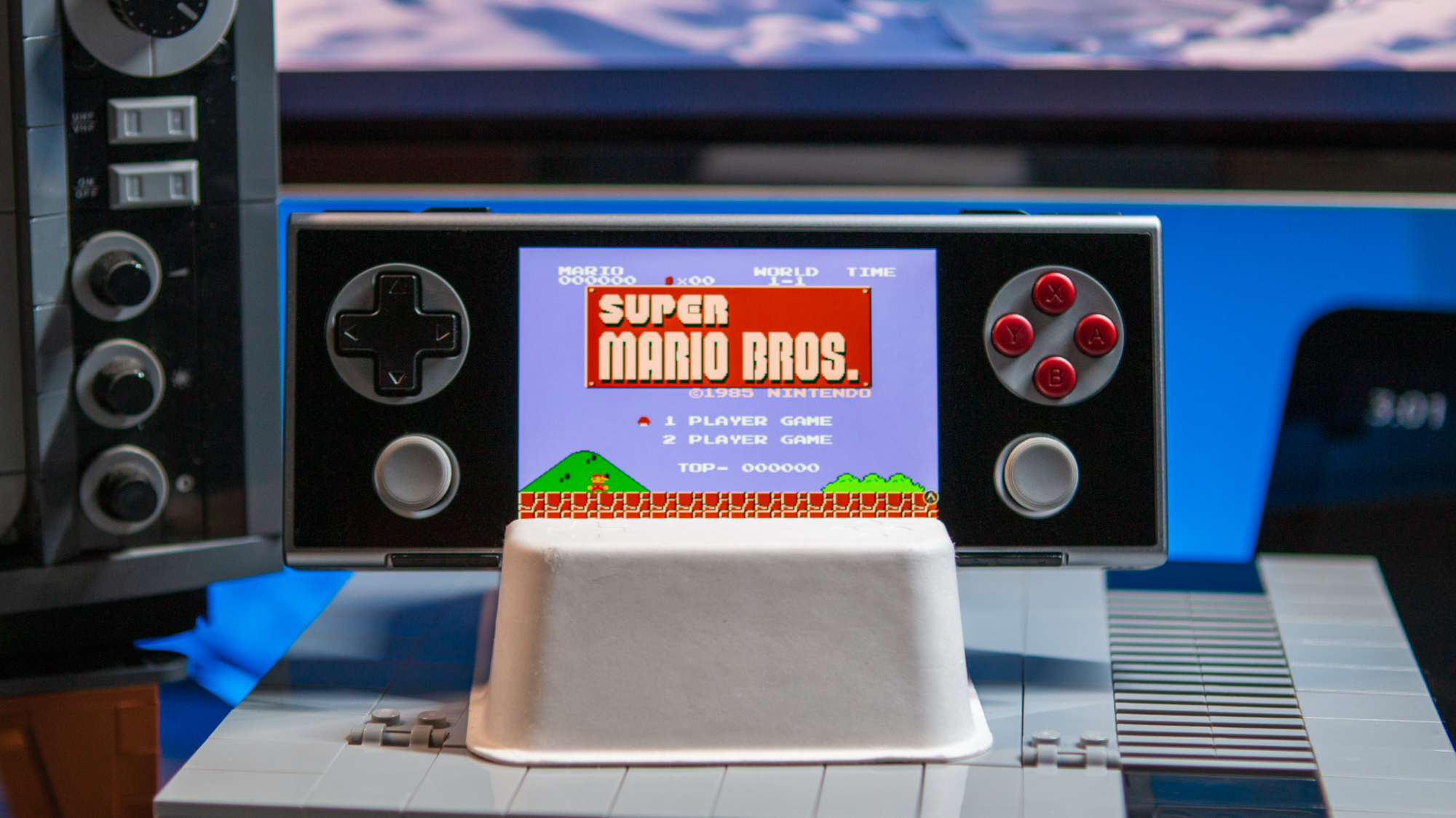Android Central Verdict
If there's one thing I've learned about AYANEO is that the company prides itself on releasing premium gaming handhelds. The Pocket Micro is just one of the latest examples, thanks to its combination of glass and aluminum. Not only does it tickle the nostalgia bone with its NES controller-like design, but with its 3:2 screen, Game Boy Advance fans will appreciate the perfect 4x integer scaling.
Pros
- +
Solid battery life
- +
Small and pocketable
- +
More comfortable than it looks
- +
Can emulate up to PS2 and GameCube
- +
Premium design
Cons
- -
Screen is kind of meh
- -
Expensive
- -
Navigating Android can be a pain
Why you can trust Android Central
The world of gaming handhelds has expanded far beyond the confines of x86 devices, as there are plenty of Android gaming handhelds to explore. AYANEO is one of the companies leading the way in this regard. However, it's taking a slightly different approach by releasing Android handhelds in a variety of form factors, such as the AYANEO Pocket Micro.
AYANEO attempts to entice those who love devices that invoke some type of nostalgia, with the Pocket Micro looking to cater to multiple factions. The most obvious of which is by making a handheld that draws inspiration from the original NES controller.
However, what you might not know is that the Pocket Micro's 3.5-inch screen offers a perfect 4x scaling for Game Boy Advance games. Which is something that's a bit of a rarity in the space. All the while, relying on Android to power the system, which opens the floodgates to a swath of games for you to choose from. And while all of that sounds great, it's important to keep things in perspective and not let the wave of nostalgia tiny your glasses any more than they already might be.
AYANEO Pocket Micro: Price and Availability

AYANEO announced the Pocket Micro alongside the Pocket DMG all the way back in May with pre-orders opening in July. The Pocket Micro was the first to become available, as shipments began in late September in limited quantities before things picked up in October.
Currently, you can purchase the AYANEO Pocket Micro through the Indiegogo campaign, with a starting price of $189 for the 6GB/128GB model. There's also an 8GB/256GB version available for $229, and a Limited Edition "Retro Gray" variant can be had for $259. We expect the Pocket Micro to soon be made available on the AYANEO website before it comes to other online retailers.
AYANEO Pocket Micro: What I like

Something that I have to pay attention to whenever I'm interested in getting a new gaming handheld is the ergonomics. I probably have a bit of carpal tunnel, meaning that with some handhelds, I can only play games for maybe 30 minutes before I need to take a break. It varies between handhelds and actually resulted in me investing in a few grips for my Nintendo Switch.
When I saw that the Pocket Micro was basically a brick, I was pretty worried that I wouldn't be able to enjoy it. Much to my surprise, that hasn't been too much of an issue, and I can't really seem to figure out why. The flat edges paired with the flat back and smaller size means that I end up holding it differently than other handhelds.
As a result, the hand and wrist fatigue doesn't actually start settling until I'm about an hour or so into a gaming session. While it's far from the Steam Deck OLED or even ROG Ally X, the Pocket Micro is more enjoyable to use than I expected.
| Category | AYANEO Pocket Micro |
|---|---|
| Display | 3.5-inch, IPS |
| Resolution | 960 x 640 |
| Refresh Rate | 60Hz |
| Processor | MediaTek Helio G99 |
| Storage | 128GB / 256GB (UFS 2.2) |
| Connectivity | microSD Card Slot / USB 2.0 Type-C / Wi-Fi 5 / Bluetooth 5.2 |
| Extras | Active Air Cooling / Fingerprint scanner / Hall joysticks |
| Battery | 2,600mAh |
| Dimensions | 156 x 63 x 18mm |
| Weight | 233g |
If there's one thing you should be aware of, it's that this thing is hefty. AYANEO has it listed at 233 grams, which is even heavier than my iPhone 16 Pro Max (227g), and barely lighter than the Galaxy Z Fold 6 (239g). This isn't necessarily a bad thing, especially when you realize why it's so heavy.

That's because, in addition to melding glass and aluminum, AYANEO packed Active Cooling into the Pocket Micro. It did so in order to keep both the device and your hands, from getting too warm. With a device this compact, heat dissipation is key because if the heat has nowhere to go, it won't take long for throttling to begin.
Speaking of performance, it's important to temper your expectations. Unlike the AYANEO Pocket DMG and Pocket S, the Micro is powered by the MediaTek Helio G99 from 2022. I can only assume this chip is at the helm because it's cheaper, which is rather important when you're talking about a premium handheld.

Although it's almost three years old, the Helio G99 has turned into a kind of "old reliable" SoC for various tablets and other devices. That being said, you'll be able to play many, if not all, of your favorite games from the Play Store. In terms of emulation, you'll start hitting the ceiling once you get into PS2 and GameCube games.
Part of that is helped by AYANEO offering configurations with either 6GB or 8GB of RAM, but the software also has different performance profiles to help push things further. I couldn't help myself from at least trying to load up some Switch games, unsurprisingly those efforts proved to be fruitless.
AYANEO Pocket Micro: What I don't

Without a doubt, my biggest irritation with the Pocket Micro was the software experience. Naturally, real estate is at a premium when you have a 3.5-inch screen to work with. But AYANEO's in-house launcher just doesn't cut. Everything is super small, and while I could just adjust the display scaling settings, that's not really something that I want to do.
Thankfully, there are gaming-focused launchers available, which quickly remedy my issues. Well, at least for the most part. There's nothing I can do to replace the slide-out panel that gives you quick access to various options. But seeing as I don't really mess with those often, it hasn't been much of an issue.
Instead, I've been bouncing between Emulation Station (ES-DE), Daijisho, and an alpha build of Console Launcher 2.0. If you really wanted to, you could even use something like Nova Launcher or Lawnchair, but where's the fun in that?

My other issue with the Pocket Micro isn't something that everyone will have to deal with, but it's something to keep in mind. While I commend AYANEO for offering a gaming handheld that's both pocketable and premium, actually playing games might become a problem.
Although the ergonomics of the Pocket Micro are a bit better than some of the other gaming handhelds, I really do wish I could play for longer than an hour at a time. While I appreciate the nostalgic design, it might have been nice to see AYANEO offer some type of ergonomic grip.
That's what the company did with the Pocket S, as the "Protective Case" not only keeps the handheld protected but provides a more comfortable experience. Because of that, I've started changing the different positions that I'm holding the Micro, just so that I can keep playing. But ultimately, the best remedy was just to stop playing for a bit until my hands and/or wrists felt better.
Again, this isn't something that is going to cause issues for some, but it's worth being aware of if you have meaty paws and are considering the Micro.
AYANEO Pocket Micro: The competition

The world of dedicated Android handhelds continues to expand, and AYANEO is one company that's leading the charge. However, it's not the only option on the block, as there are quite a few Android gaming handhelds to choose from.
In November, the Retroid Pocket 5 was released, which is the highly-anticipated successor to the Retroid Pocket 4 Pro from January 2024. The Pocket 5 features a 5.5-inch AMOLED display, while being powered by the Qualcomm Snapdragon 865 paired with 8GB of RAM and 128GB of expandable storage.
Then there's the Anbernic RG406H, which also arrived in November, and is equipped with the Unisoc Tiger T820, along with a smaller 4-inch IPS touchscreen. Anbernic is well-known in the world of retro handhelds, however, the company tends to focus more on Linux-based devices. That being said, the RG406H is an absolute delight to use, as long as you understand that the T820 isn't the most powerful chip.
If you're looking for a handheld from a company that you recognize, then you'll probably want to check out the Razer Edge. This was of the first dedicated Android handhelds to be released by a mainstream company, powered by the Snapdragon G3x Gen 1. Although Razer has yet to release a successor, the Edge remains incredibly versatile, and it's regularly on sale for around $215.
AYANEO Pocket Micro: Should you buy it?

You should buy this if...
- You want an Android handheld that looks like an NES controller with a screen.
- You're a sucker for premium devices.
- You're looking for a way to play retro and modern games on a pocketable device.
You shouldn't buy this if...
- You're on a budget.
- You have concerns about ergonomics.
- You want a handheld that's more powerful.
Frankly, I already have my fair share of Android handhelds, not to mention a variety of foldable phones at my disposal. That being said, there's just something about playing games on the Pocket Micro that sparks a bit of joy every time I pick it up. Sure, it's not as powerful as other devices, but very few of them manage to pair a premium design with a retro aesthetic in the same way.
At the same time, it's really tough to recommend the Pocket Micro to anyone who isn't a retro gaming enthusiast. The almost-$200 price tag might just be too much for some, especially when more powerful handhelds can be had for around the same price. It's really just a matter of considering the trade-offs when trying to decide between the Pocket Micro and whatever else might be on your radar.

Andrew Myrick is a Senior Editor at Android Central. He enjoys everything to do with technology, including tablets, smartphones, and everything in between. Perhaps his favorite past-time is collecting different headphones, even if they all end up in the same drawer.
You must confirm your public display name before commenting
Please logout and then login again, you will then be prompted to enter your display name.

